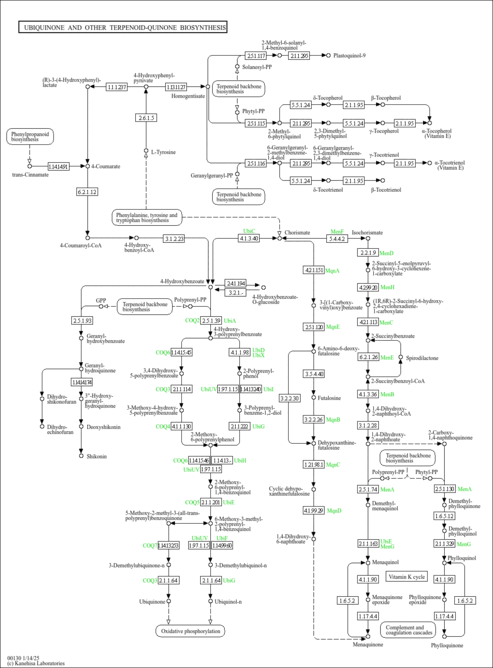| InChI | InChI=1S/C52H78O3/c1-41(2)19-11-20-42(3)21-12-22-43(4)23-13-24-44(5)25-14-26-45(6)27-15-28-46(7)29-16-30-47(8)31-17-32-48(9)33-18-34-49(10)39-40-55-52(54)50-35-37-51(53)38-36-50/h19,21,23,25,27,29,31,33,35-39,53H,11-18,20,22,24,26,28,30,32,34,40H2,1-10H3/b42-21+,43-23+,44-25+,45-27+,46-29+,47-31+,48-33+,49-39+ |
|---|
| IUPAC Name | (2E,6E,10E,14E,18E,22E,26E,30E)-3,7,11,15,19,23,27,31,35-nonamethylhexatriaconta-2,6,10,14,18,22,26,30,34-nonaen-1-yl 4-hydroxybenzoate |
|---|
| References: | - Scheer, M., Grote, A., Chang, A., Schomburg, I., Munaretto, C., Rother, M., Sohngen, C., Stelzer, M., Thiele, J., Schomburg, D. (2011). "BRENDA, the enzyme information system in 2011." Nucleic Acids Res 39:D670-D676.21062828
- Herrgard, M. J., Swainston, N., Dobson, P., Dunn, W. B., Arga, K. Y., Arvas, M., Bluthgen, N., Borger, S., Costenoble, R., Heinemann, M., Hucka, M., Le Novere, N., Li, P., Liebermeister, W., Mo, M. L., Oliveira, A. P., Petranovic, D., Pettifer, S., Simeonidis, E., Smallbone, K., Spasic, I., Weichart, D., Brent, R., Broomhead, D. S., Westerhoff, H. V., Kirdar, B., Penttila, M., Klipp, E., Palsson, B. O., Sauer, U., Oliver, S. G., Mendes, P., Nielsen, J., Kell, D. B. (2008). "A consensus yeast metabolic network reconstruction obtained from a community approach to systems biology." Nat Biotechnol 26:1155-1160.18846089
- He, B., Chen, P., Chen, S. Y., Vancura, K. L., Michaelis, S., Powers, S. (1991). "RAM2, an essential gene of yeast, and RAM1 encode the two polypeptide components of the farnesyltransferase that prenylates a-factor and Ras proteins." Proc Natl Acad Sci U S A 88:11373-11377.1763050
|
|---|

